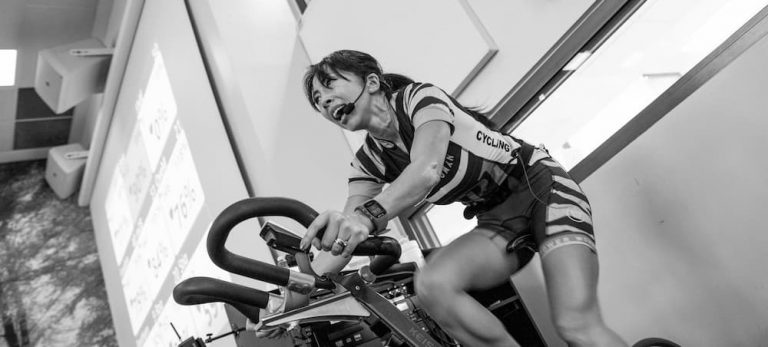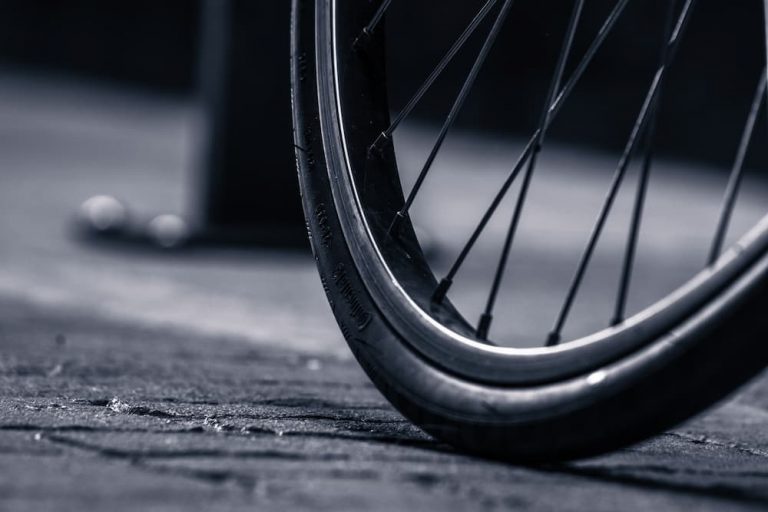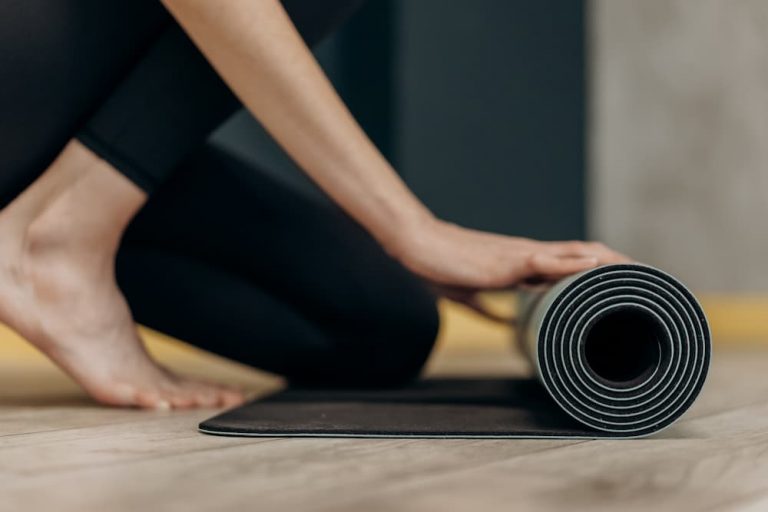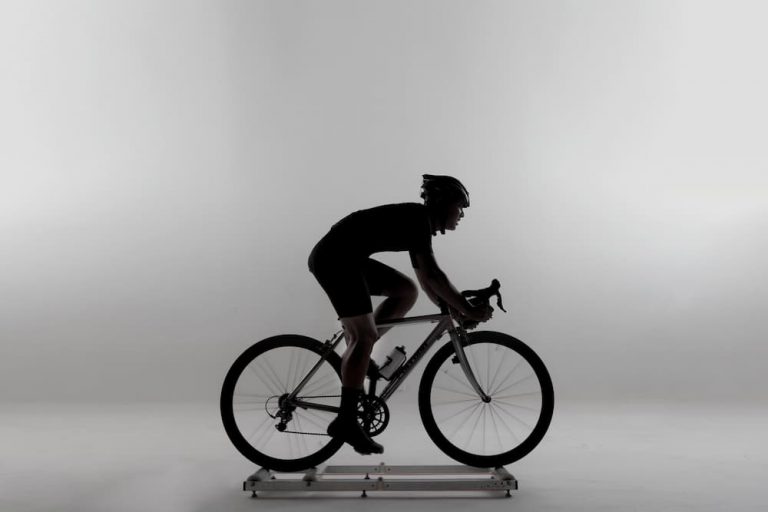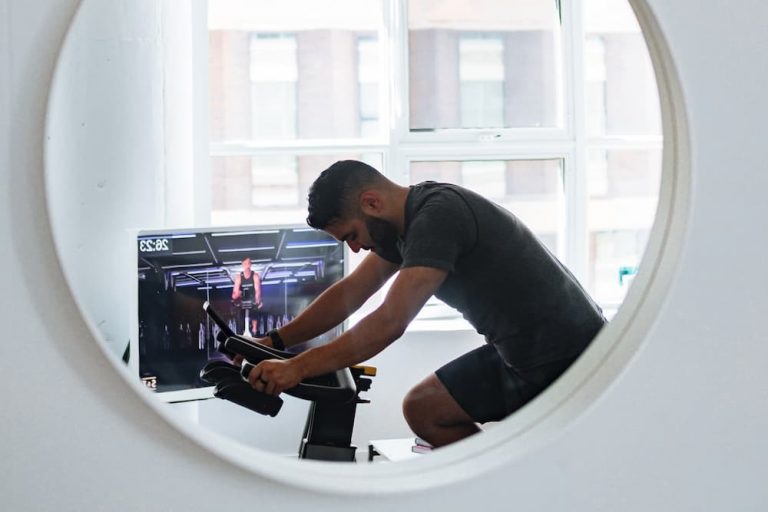Do You Need A Mat Under An Exercise Bike?
I’ve encountered a common question from beginner indoor cyclists – do you really need a mat under your exercise bike? This query might seem straightforward, but it’s more nuanced than you might think. Initially, I, too, overlooked a mat’s significance, perceiving it as an optional accessory. However, as I dug deeper into indoor cycling, I realized that the choice of whether to use a mat or not could impact not just the bike but also the flooring and the overall cycling experience.
The absence of a mat can lead to issues like floor damage, excessive noise, and bike instability – problems that can dampen the enthusiasm of any indoor cycling enthusiast. For those using bikes on surfaces like hardwood or carpet, these issues are even more pronounced, leading to potential long-term consequences.
But here’s the good news: the solution might be simpler than you think. A mat under your exercise bike can address these concerns effectively, providing a protective barrier, reducing noise, and ensuring stability. In this article, I’ll take you through the reasons why a mat can be a game-changer for your indoor cycling setup, considering different floor types and personal needs. By the end, you’ll have a clear understanding of whether a mat is just a nice-to-have or a must-have for your spin bike.
Contents
Do I Need a Mat Under My Spin Bike on…
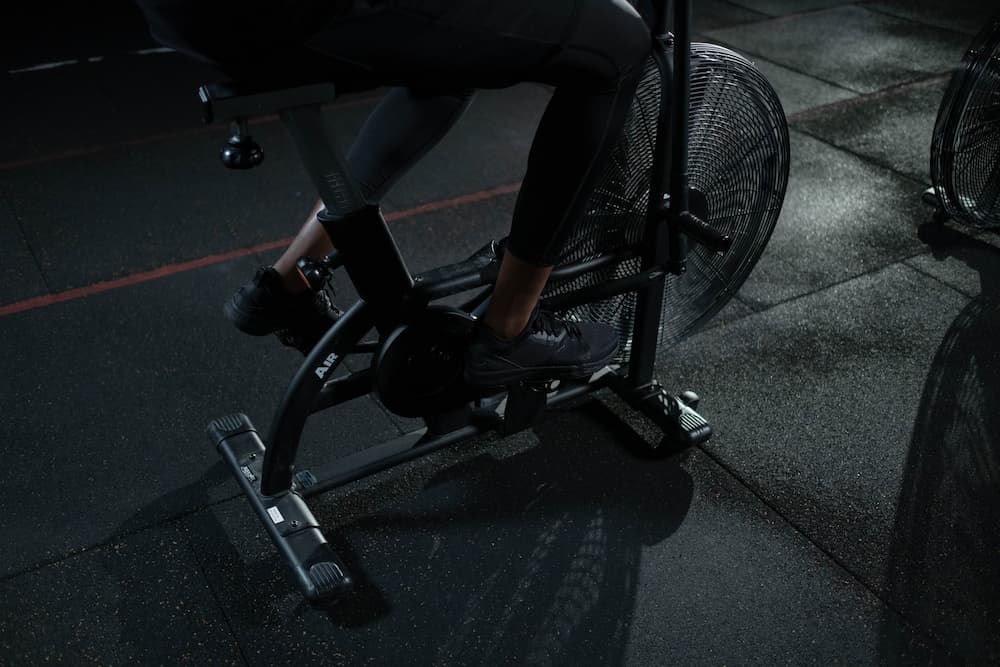
Yes, it would help if you had a mat under your spin bike. However, the answer to how a mat can help you depends on the type of flooring.
When considering the addition of a mat beneath your exercise bike, it’s important to recognize its universal benefits, regardless of the flooring type in your workout area.
A mat serves as a protective layer, safeguarding any surface—be it hardwood, carpet, tile, or even more durable options like vinyl and concrete—from potential damage and wear. It enhances stability, preventing the bike from slipping, a common concern especially on smoother surfaces like tiles or polished wood.
A mat also plays a crucial role in noise reduction, absorbing vibrations, and creating a more pleasant environment, which is particularly beneficial in shared living spaces. By using a mat, you not only extend the life of your flooring but also improve the safety and comfort of your indoor cycling experience.
Now, let’s take a quick look at how different types of flooring can react to your exercise bike, with or without the bike trainer mat.
Read more: Best Bike Trainer Mat For The Stationary Bike
Vinyl Floor?
No, you don’t need a mat on a vinyl floor. Vinyl flooring is one of the most suitable floors to accommodate a spin bike. It muffles most of the noise that the bike makes. They also provide enough stability by preventing the bicycle from moving or shifting.
Plus, you can wipe them down fairly easily. However, with excessive use or heavy pressure, the vinyl floor can become punctured. In this case, a mat can be handy.
Hardwood Floor?
Yes, if you’re setting up the spin bike on a hardwood floor, we strongly recommend using a mat. The reason is that hardwood floors don’t provide enough grip to keep the cycle from sliding. Also, it’s challenging to remove sweat and dirt from hardwood floors.
However, there’s no risk of accidentally damaging the floor.
Carpet?
Yes, you need a mat if you put your exercise bike on a carpet. The carpet has the same function and offers all the advantages of a mat. However, a lot of dust accumulates on the rug, and it gets dirty quickly due to sweat. Therefore, we recommend placing an exercise mat over the carpet.
Tiles?
Yes, you need a mat under the bike if you put it on the tile floor. First of all, tiles are very slippery. So you’ll slide a lot if you don’t use a mat. Also, they make a lot of noise because they can’t absorb sound. They can break if you put a lot of pressure on the tiles.
The good thing is that they’re straightforward to clean. However, this isn’t enough to justify not using a mat.
Concrete Floor?
No, you usually don’t need a mat under your bike if it’s on a concrete floor. Concrete floors are very noise absorbent, provide excellent grip, and are easy to clean. Also, scratches don’t form as quickly there. So on a concrete floor, you can do without a mat.
Related reading: Can You Put Exercise Bike on Carpet?
Why Do I Need a Mat Under My Spin Bike?
It would help if you had a mat under your spin bike for several reasons, such as to prevent scratches and slip.
In this section, you’ll learn how a mat under your spin bike can save you, the floor, and the neighbors a lot of trouble. Let’s get started right away!
Protect Your Floor from Damage
As mentioned earlier, a mat can protect all types of floors. Depending on the type of floor, the benefits will vary. In any case, it’ll protect the floor from the bike’s vibrations.
Prevents Unintentional Slides
You can slide around if you don’t use an exercise or gym mat under your spinning bike. Not only is this annoying, but it scrapes up the floor and affects stability. Using a mat can prevent all of that.
Increases Stability
Gym equipment isn’t equipped with the best vibration-dampening components; this is also true for spinning bikes. When you use them on a typical floor, you often lose stability. An exercise or gym mat under the machine increases grip, reduces vibration, and makes the machine more stable.
Makes Cleaning Effortless
Spin bikes can leave a lot of dirt and sweat on the floor after each use. Cleaning a floor is difficult, but cleaning a mat isn’t. That’s why we recommend you put a mat under it.
Reduces Noise
A gym mat is a good idea if you don’t want the neighbors to complain about noise regularly. They can absorb the vibrations that occur during spinning and reduce the noise.
Read more: How To Make Bike Trainer Quieter?
Protects the Bike Itself
Finally, an exercise mat protects the spinning bike from dents and scratches. Since it also reduces vibrations, it increases the longevity of the equipment.
Frequently Asked Questions
Can I use a yoga mat under my exercise bike?
Yes, you can use a yoga mat, but it is not ideal. While a yoga mat is a readily available option, it might not be the ideal choice for an exercise bike. Yoga mats are designed for cushioning and grip during yoga exercises, not for supporting heavy equipment. They are typically thinner and less durable than mats made specifically for exercise equipment. Using a yoga mat might offer some level of floor protection, but it’s likely to compress over time under the weight of the bike. This compression reduces its effectiveness in vibration absorption and stability. Additionally, yoga mats might not provide sufficient grip, leading to potential slipping hazards during intense cycling sessions. For optimal results, investing in a mat specifically designed for exercise equipment is a better choice. These mats are thicker, more durable, and better suited to handle the weight and movement of an exercise bike, ensuring better floor protection and bike stability.
Can I use any regular mat under my exercise bike, or does it need to be a specific type?
When I first started indoor cycling, I wondered the same thing. It turns out that while you can use a regular mat, it’s not always the best choice. Exercise bike mats are specifically designed to absorb vibration, reduce noise, and provide stability. They’re usually made from dense, durable materials like PVC or rubber. Regular mats, like yoga mats, might be too thin and not durable enough to handle the weight and movement of an exercise bike.
How do I choose the right size mat for my exercise bike?
The size of the mat is crucial for optimal protection and stability. I recommend measuring your bike’s footprint and adding a few extra inches on each side. This extra space ensures that any sweat or water spills during intense workouts are caught by the mat, protecting your floor. Also, consider the space you have available in your room – the mat should fit comfortably without cramping your workout area.
Is there a difference in mat requirements for upright vs. recumbent exercise bikes?
Yes, there is a difference. Upright bikes have a smaller footprint and tend to exert more pressure on a concentrated area, especially if you’re doing intense workouts. On the other hand, recumbent bikes distribute weight more evenly but have a larger footprint. Therefore, you’ll need a mat that’s appropriate for the size and type of your bike. For upright bikes, look for mats with more cushioning and durability in a smaller size, while for recumbent bikes, a larger, more evenly supportive mat works best.
Conclusion
Exploring the need for a mat under a spin bike has led me to some insightful conclusions. Each floor type, from vinyl to concrete, interacts uniquely with exercise bikes, influencing the decision to use a mat. What stands out is the multifaceted role of a mat – not just as a protective layer for your floor, but as a stabilizer for your bike and a noise reducer, enhancing your indoor cycling experience.
A mat is almost necessary on hardwood, carpet, and tile, preventing damage and slips while making cleaning easier. Interestingly, the mat’s importance diminishes on vinyl and concrete floors, yet it still offers benefits worth considering. Through this analysis, I’ve realized that the decision to use a mat is less about absolutes and more about optimizing your indoor cycling setup for safety, longevity, and comfort.
My advice leans towards using a mat under your spin bike. It’s a small investment that pays off in preserving your bike and flooring, ensuring stability, and maintaining peace with neighbors. However, always weigh the specifics of your situation – the type of flooring, the intensity of your workouts, and personal preferences.
Your ultimate goal is to create a conducive and enjoyable indoor cycling environment. Whether it’s through a mat under your bike or other means, it’s about finding what works best for you. Stay safe as you pedal towards your fitness goals!


